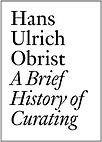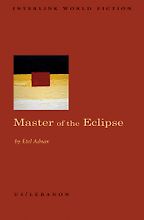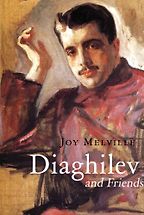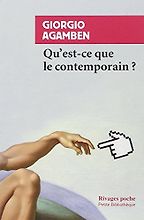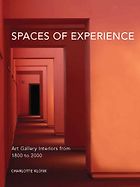You are starting your book choices with a writer of fiction – Etel Adnan and Master of the Eclipse.
Etel Adnan is in her mid 80s and she is one of my heroes. She is one of the great poets of her time and also a wonderful visual artist: so she bridges these two things. In the Serpentine poetry marathon we try to bridge literature and art. I’ve met her a couple of times and she’s a great inspiration. Her work gives one immense courage. I read her almost every day – it’s an addiction.
Her books are really about displacement. Master of the Eclipse is short stories, full of film-makers, poets, and it moves between geographies (she lives near San Francisco, but also in Paris and Beirut). It is also about war: she wrote in a letter that we are in ‘a constant fight against the apocalypse’ – meaning that this is a dark moment full of wars.
What is so key about Etel is also how many artists of the younger generation she inspires. And that’s how I found her. She is an artists’ artist. Etel Adnan is in the same tradition as many figures in the past who were painters and poets – but in both the poetry and short stories she is a unique voice. She is part of my project to map the 21st century, both in a book and an online map – I’m interested in how artists, web designers and poets, map our complex moment in time. Etel did an amazing map for the book, which Thames and Hudson are publishing later this year.
On to Gerhard Richter’s Wald – a book of photographs.
For me Gerhard Richter is not only one of the greatest living artists and painters of our epoch, he is also one of the greatest inventors of artists’ books. The Wald book stands for a whole series of art books that Gerhard Richter has designed in the last few years. I chose Wald because it is one of my favourites, but there are at least 20 more I could pick – it’s an amazing, prolific activity to produce these books in parallel with his paintings. He has done dozens and dozens, from a gorgeous early book in the 1970s about ice, where he photographed the polar icebergs, to his atlas, which is amazing, to War Cut, which I edited with him, which was details of abstract painting. He would photograph an abstract painting’s details from many different angles and discover all these landscapes. It was micro and macro. Gerhard Richter actually did a book about me – he took a lot of portraits and then made a random collage of all my writings so that they became an absurd text.
“To be contemporary means to come back to a present where we have never been.”
In Wald he produced 285 stunning details of a very dense forest near his house in Hahnwald – they are almost abstract images. As always with Richter, he has an encyclopedic desire to put them into groups. Some are the branches, some the logs, some are diagonally growing trees, some are horizontal, some vertical. Then he interspersed text from a forestry magazine, but reproducing the words in a random order. So you have these very structured photographs of trees, which he took on his daily walks, brought together with text in a very complex book, which Richter designed himself – so it is an artwork. One is almost on a walk if one goes through this book, navigating through the forest and through the randomly arranged text and making one’s own connections. It really involves the reader.
Does the general reading public understand artists’ books? Don’t we still think about art as something that you see in a gallery?
Since the 1960s and the moment of conceptual art, more and more artists have produced their own books. In England you’ve got Gilbert and George, who are pioneers, or Richard Long, for example. They have done beautiful things with books.
So that is recent, but then is it really new? In fact it is a continuum. William Blake made books as artworks and now we have Gilbert and George doing it. There is a link between the beautiful artists’ books of previous centuries and Gerhard Richter too. Very often artists have thought very carefully about books as a vehicle for their art. It’s not just a book about their art, it’s more like a mobile exhibition.
Because a book is a tactile object – it’s personal?
Yes, when artists make books they do tend to become artworks because they conceive of them as an object. People can touch and hold it in their hands, which is an important part of it. But also the book is a constant presence. Very often these artists’ books are done in an edition of only 2,000 or 3,000 copies, so afterwards it is going to be in 2,000 or 3,000 libraries or households over the world. It is amazing if you think that in almost every city in the world there are some copies of these artists’ books, whereas a work of art only exists once – then when a museum isn’t showing it and it’s in storage, you don’t see it at all. I think artists are interested in the idea that books have an almost viral infiltration of the world. Books have an amazing ability to travel and then they pop up when we least expect it – books are magical.
Your next book is about Diaghilev and his circle. Is there a link to your own breakfast salon, the Brutally Early Club?
It is certainly connected. I believe that all the disciplines should meet and I have a very trans-disciplinary idea of art. Salons obviously bring people together who otherwise wouldn’t meet. I observed that in London everybody is so busy, it is such an intense city, therefore improvisation has become very difficult. So you can’t just decide, for example, ‘OK, tonight I will get together with my friends.’ It’s crazy. I need improvisation to survive, so I thought, ‘How can I inject improvisation into the London of the early 21st century?’ I realised that if I do it at 6.30 in the morning nobody can say,‘I already have an appointment’. As long as people can get themselves up we can arrange it the day before just by making a few phone calls.
The connection to Diaghilev is that inter-disciplinarity. Definitely, for me, he is one of the great curators of the 20th century. With his Ballet Russes, in the years between 1909 and 1929, he obviously revolutionised the world of dance. But they also gave incredible input into theatre design, into collaborations between artists, dancers and choreographers, between ballet, architecture, music and sound. If you think about these encounters – it was almost like a gesamtkunstwerk [an ideal synthesis of all the arts].
Composers of the importance of Stravinsky would do the sound, artists of the importance of Picasso or Braque or the Russian constructivists Goncharova or Popova would do stage sets. The dancers would be the likes of Nijinksy. Massine and Jean Cocteau are involved. And Diaghilev is the impresario who brings it all together and orchestrates it. In my very first exchange with J G Ballard, by fax, I asked him about my profession, about curating, and he defined it as ideally a kind of a junction making. Diaghilev is the great junction-maker of the 20th century. Curating is not only about bringing people into contact with objects. It is also objects and objects, and also about people and people.
They had a good time too – the pictures of Diaghilev’s parties look great.
Diaghilev is a constant inspiration. I also love his quote: ‘I do nothing but I’m indispensable.’ And these conversations between Diaghilev and Cocteau where they say ‘Etonnez-moi!’ [‘Surprise me!’] They wanted the opposite of routine.
We move on to Giorgio Agamben and Qu’est-ce que le contemporain?
This little book is my bible: a philosophical text about what it means to be contemporary. Of course, if one works in the field of contemporary art this is unbelievably interesting. It is term which one uses every day, a word with which one is confronted every day. Agamben is one of the key philosophers of our time, and it is interesting the way that philosophy has migrated into art criticism as well as into many other fields.
Agamben’s book is really about his idea that when we are contemporary it is not so much to do with being in sync with our time. Maybe instead it is that we have a certain distance, there is a certain shift or dislocation there.
How do you achieve this distance – or do you just find yourself in this state of being contemporary?
Agamben tells us that to be contemporary means to come back to a present where we have never been – to resist the homogenisation of time, to go through ruptures and discontinuities. Agamben in this little book argues that the one who belongs to his or her own time is the one who does not coincide psychologically with it. It’s somehow because when we are not completely in sync with the time then maybe we are more apt to perceive, to actually catch or capture our own time. He follows this up by saying that the contemporary is the one who is not blinded by the lights of his own time or century. And that is a great danger.
The internet has brought us, our thinking, more into the present tense and so that raises more questions about what it means to be contemporary. A certain resistance to the present tense made me increasingly see there is an urgent need to be contemporary. This is what books can do and what exhibitions can do.
Your last choice is about how art galleries have changed.
For me, artists are the most important people. I have always been obsessed by artists. But I also wanted a book about the world of museums. As co-director with Julia Peyton Jones at the Serpentine, we think constantly about what Charlotte Klonk calls these Spaces of Experience, about how we can make extraordinary experiences possible and accessible for everyone. I found this history of art gallery interiors from 1800 to 2000 very interesting. It demonstrates how the gallery designs of the 19th century were helped by scientific theories, by Goethe’s discussion of colours, by Wilhelm Wundt’s stimulation experiments, where sameness was eliminated so the spaces were all different.
Klonk considers how these scientific considerations were connected to social or political questions. It made me think how we could be inspired by science now: how could quantum physics and quantum mechanics inspire how we design museum shows? What would a superstring exhibition be like?
Get the weekly Five Books newsletter
The book also goes into the 20th century, when display strategies changed a lot because artworks had more space and the furniture was removed – in the 19th century you had all this furniture in galleries. Klonk’s book is mostly focused on Germany and the West so it is not complete, but it gives us a very interesting account of how we have changed. How the artists of the Bauhaus did designs for a collective experience of art and how that then inspired Alfred Barr in creating New York’s Museum of Modern Art. There is also the idea of seeing the impact on galleries of new fashions in interior decoration and department stores.
When I started out, curating was a very obscure profession – I mean when I was signing hotel registers as a curator, this was seen as very weird. But now on the internet we come across it every day: blogs and websites are curated; even the high street is curated. Spaces of Experience is a good toolbox and also very good for somebody who is not in the art world. It is concise and precise and straightforward – I wish this book had existed when I started 20 years ago.
Also this book is about the interior – because in the last 20 years all the thought has gone into the exterior of galleries. For example, all the conversation that centres on the Guggenheim in Bilbao [designed by Frank Gehry in 1997], which is obviously a fabulous building, but it is a sculpture, it is the façade.
A totemic building.
Exactly. It is the iconomania or the iconophilia of architectural experience in our times. And what Charlotte Klonk does is bring us back to more of a vision of interior.
Very appropriate for running a gallery in rainy London where things have to happen inside.
Although we have the park and the trees outside.
Five Books aims to keep its book recommendations and interviews up to date. If you are the interviewee and would like to update your choice of books (or even just what you say about them) please email us at [email protected]
Five Books interviews are expensive to produce. If you've enjoyed this interview, please support us by donating a small amount.

